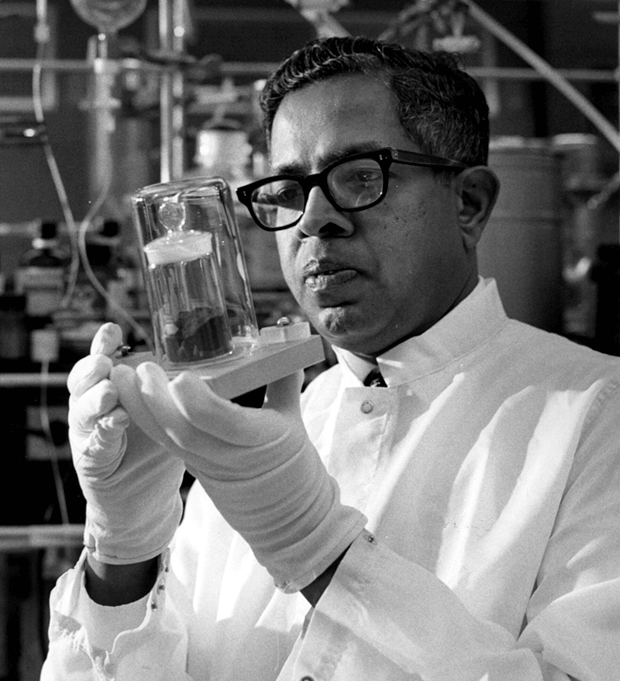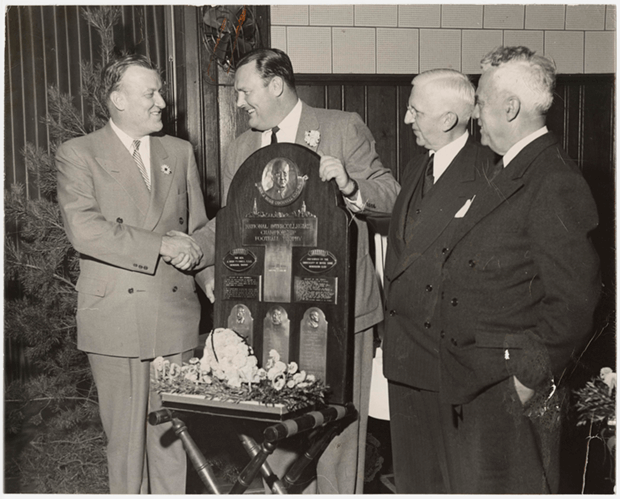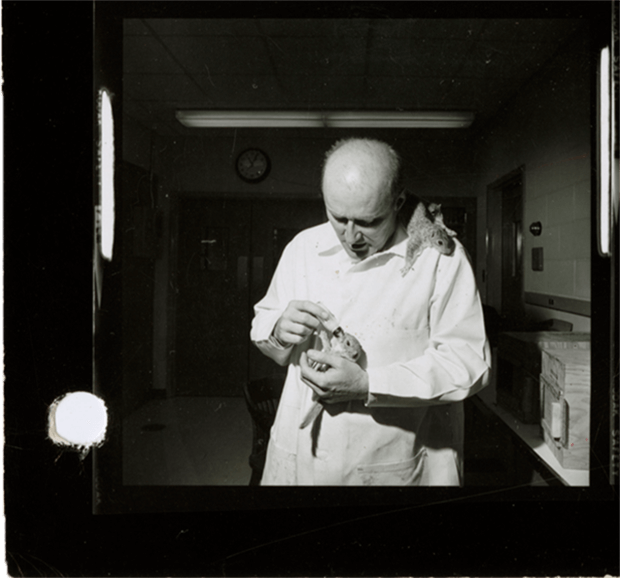- October 06, 2015
- By Karen Shih ’09
It’s the start of the spookiest month of the year. As the air turns chillier and darkness settles earlier, we ventured out to find Maryland’s strangest mysteries. What we found aren’t ghost stories—though UMD has plenty of those. Instead, we’ve scoured the University Archives blog and asked Assistant University Archivist Jason Speck, who says he loves “offbeat-type stuff,” to take us through some of the odder events in Terp history:

Moon Dust Enigma
It was the middle of the night, just before Christmas 1971, when a man broke into the UMD Chemistry Building, precisely where professors Cyril Ponnamperuma (above) and Joseph Vanderslice were storing and studying priceless moon dust for signs of the building blocks of life. But after ransacking closets and breaking down doors to several labs, he left with just oxalic acid, commonly used for chemical analysis or cleaning—though not before his getaway driver single-handedly imprisoned four campus security guards in a disabled squad car.
The baffling burglary was big news in the region, just two years after the historic moon landing, and a story appeared on the front of the Metro section of The Washington Post. In the article, the professors were adamant the men were after the moon dust, but the head of campus security thought they were only looking for the chemicals.
“One of the things that’s not clear to me after all this time is, ‘What made Dr. Ponnamperuma so certain that’s what they were after?’” says Speck. “One of the things we need to look back into is if the university made a big deal of the moon dust coming here.”

The Missing Trophy
Maryland won its only football national championship in 1953, but on campus, there’s no shiny proof of it: The trophy isn’t here today.
“For years, nobody knew where it went,” says Speck. “It was a shame it wasn’t in the Archives, so where did it end up?”
It turns out that in the first half of the 20th century, winners got to celebrate with the trophy, but it wasn’t until they won three times that they were allowed to keep it. For example, in the 1920s, Notre Dame won the Rissman Trophy three times, then “retired” it and named the next one. Several more trophies were named and retired until Notre Dame created the Rev. J. Hugh O’Donnell trophy, which is the one UMD won. That one was ultimately retired by the University of Oklahoma in 1956, where it still remains.
The College Football Playoff National Championship Trophy is the one awarded today—but now, nobody gets to “retire” it.
The Archives does have other important football memorabilia, including Jack Scarbath’s game helmet and jersey, which he donated several years ago. He was Maryland’s top finisher in the race for the Heisman Trophy, voted second in 1952. “That’s a really special thing,” Speck says. To relive those glory days, watch old football footage digitized by the Archives team.

The Great Squirrel Die-Off
This next incident was less of a Maryland mystery than an East Coast mystery—but one that required UMD expertise to answer.
In the fall of 1968, dead squirrels dotted every major road and riverbank from Florida to Vermont, appearing nearly every mile instead of every 10 miles, as usual (though the phenomenon seemed to skip Maryland).
Who could unravel this grisly puzzle? Maryland biology Professor Vagn Flyger (above). He was a squirrel expert who not only trapped and studied the critters, but sometimes taught with one on his shoulder in class and even ate them, reportedly saying they tasted like chicken.
He discovered that the squirrel die-off was because of an unusually bountiful acorn crop the year before, which led to a population boom. With all the extra squirrels out looking for places to bury their nuts, they ran into unfamiliar territory (meaning: roads) and unfortunately, many got crushed by passing vehicles.
“The real interesting fact was that we had this squirrel specialist—who knew?” Speck says.
